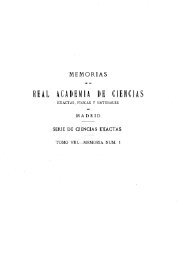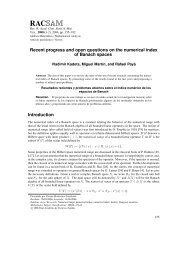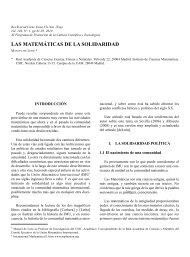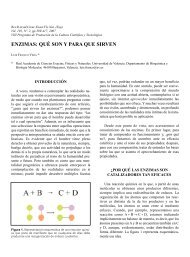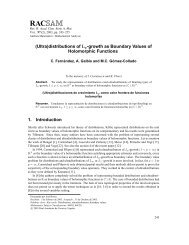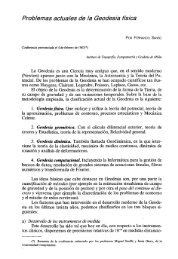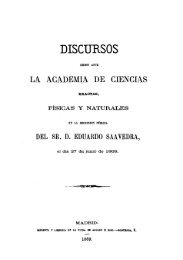The water footprint and virtual water exports of Spanish tomatoes
The water footprint and virtual water exports of Spanish tomatoes
The water footprint and virtual water exports of Spanish tomatoes
- No tags were found...
Create successful ePaper yourself
Turn your PDF publications into a flip-book with our unique Google optimized e-Paper software.
D. CHICO et al. 11otranspiration has been estimated using the CROPWATmodel (FAO, 1998; FAO, 2009a). Within this model, the ‘irrigationschedule option’ was applied, which includes a dynamicsoil <strong>water</strong> balance <strong>and</strong> keeps track <strong>of</strong> the soil moisturecontent over time. <strong>The</strong> calculations have been done usingclimate data from representative meteorological stations locatedin the major crop-producing provinces, selected dependingon data availability. Monthly reference evapotranspiration(ET o) <strong>and</strong> precipitation for each <strong>of</strong> the provinceswas obtained from the National Meteorological Agency(AEMET, 2010). When data were missing, it was completedwith the Integral Service Farmer Advice (MARM 2010a).<strong>The</strong> total crop area <strong>and</strong> production for each province wereobtained from the Agricultural <strong>and</strong> Statistics Yearbook foreach <strong>of</strong> the studied years, distinguishing growing systems<strong>and</strong> growing periods (MARM, 2010b). In the case <strong>of</strong> the year2008, since data on seasonal production was not available,the same distribution as in 2007 was used. Data on plantingdates <strong>and</strong> growing length was taken from the “sowing <strong>and</strong>harvesting calendar” from the Ministry <strong>of</strong> the Environment<strong>and</strong> Rural <strong>and</strong> Marine Affairs <strong>of</strong> Spain (MARM, 2002). Thisdatabase includes open-air <strong>and</strong> greenhouse production.However, when the data was markedly biased towardsshort growing length, or was missing, the data was adjustedfrom that <strong>of</strong> the nearest, agronomically similar province(Appendix I).Crop parameters required for the evapotraspiration calculationwere based on FAO (1998), adjusted when more localinformation was found (Campillo, 2007) (Table 1).Data on soil types was taken from the EUROSTAT soilmap (CEC, 1985) at 1:1,000,000 scale. Textural classes wereused to determine the soil characteristics <strong>and</strong> were classifiedin four categories: S<strong>and</strong>y-Loam, Loam, Clay-Loam <strong>and</strong>Clay. Canary Isl<strong>and</strong>s’ textural classes are based on the Dig-



